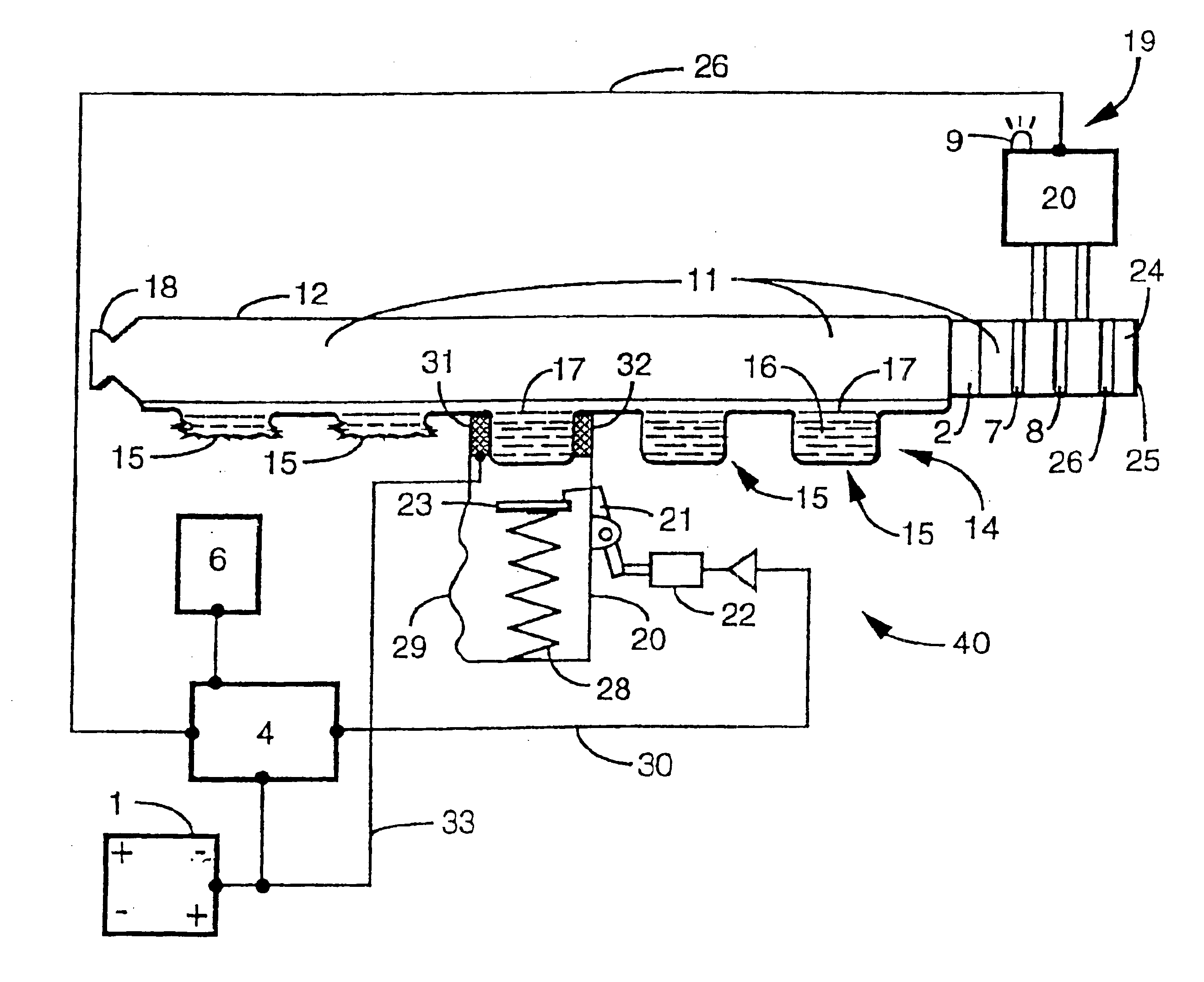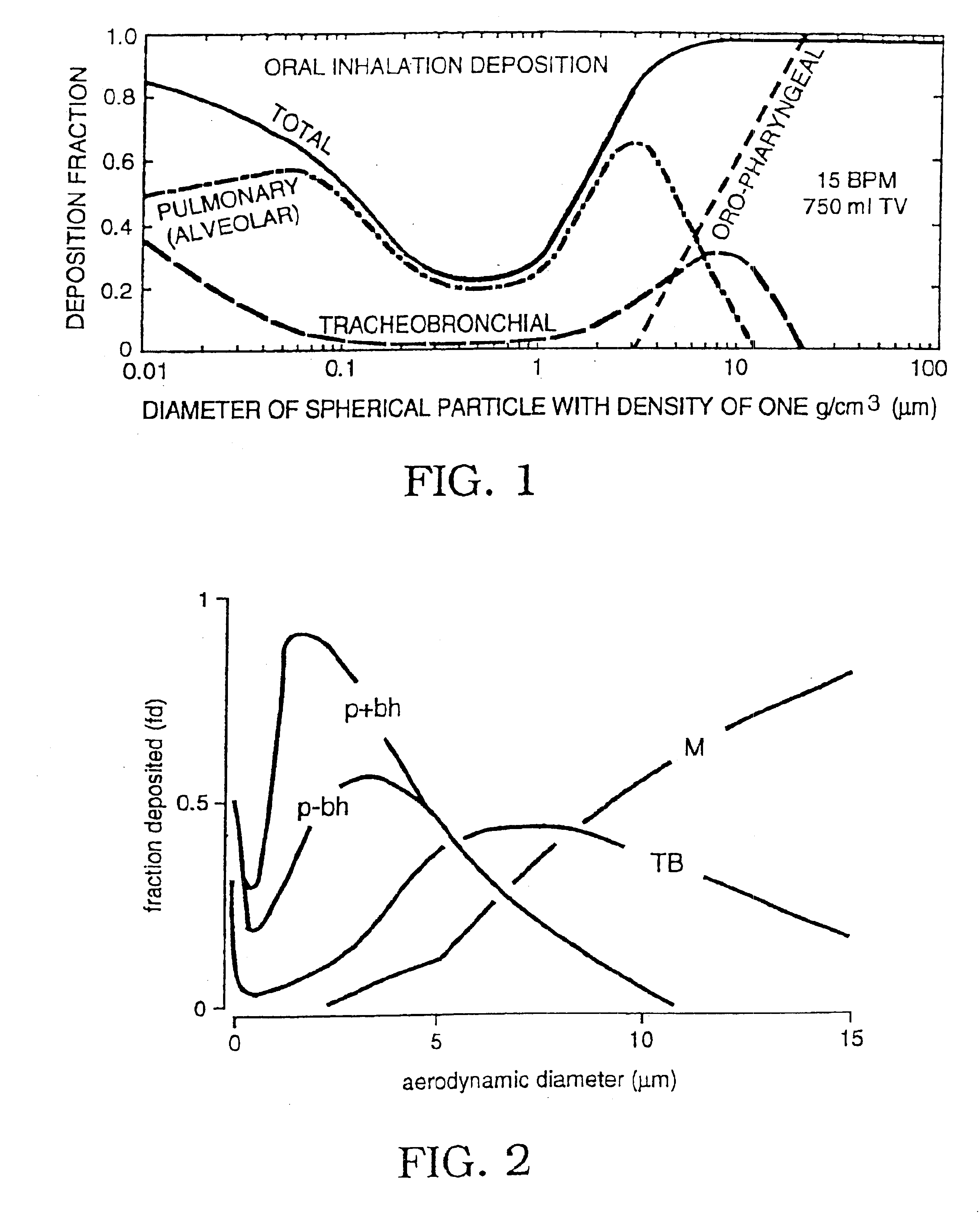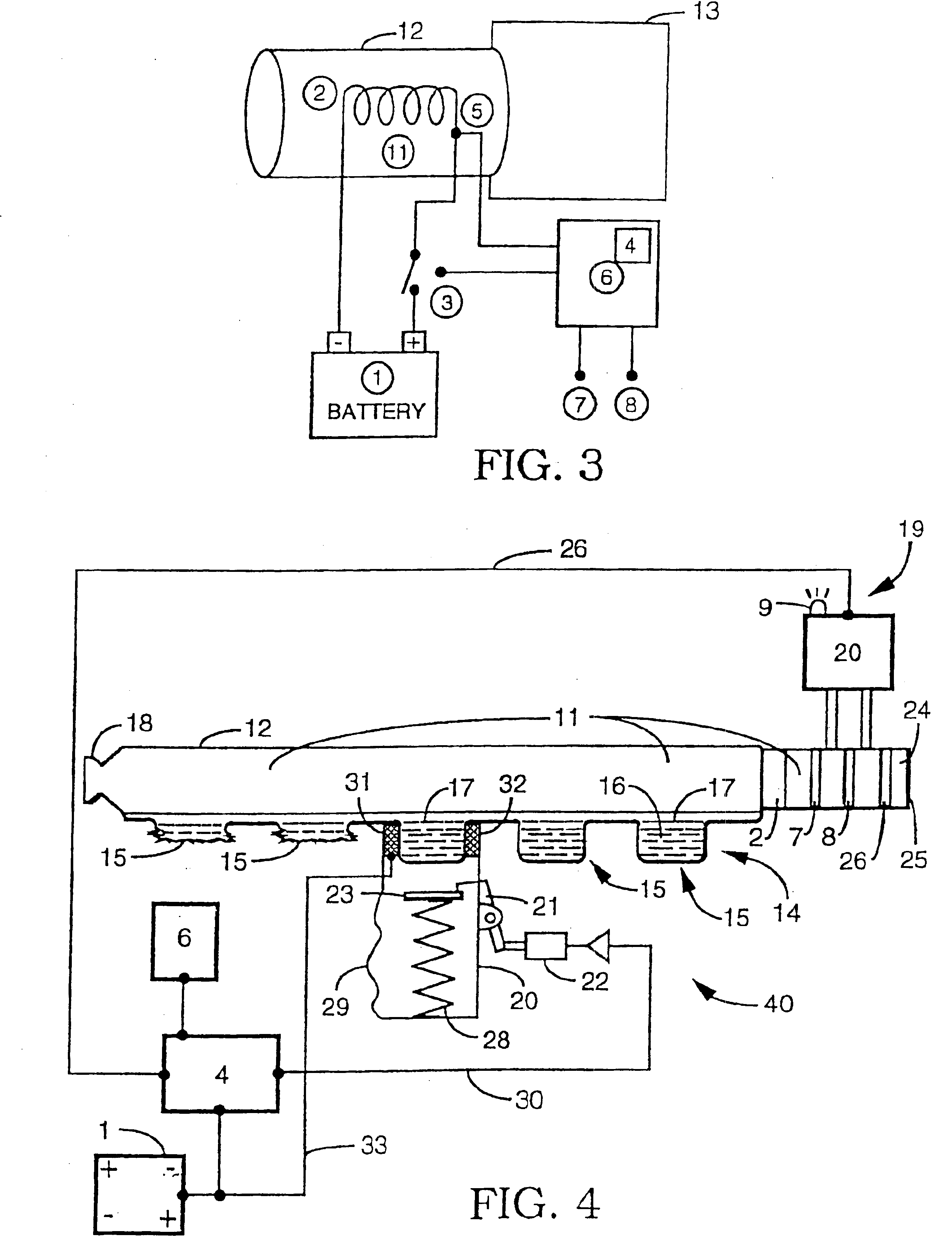Temperature controlling device for aerosol drug delivery
a temperature control device and drug technology, applied in air humidification systems, lighting and heating apparatuses, heating types, etc., can solve problems such as difficulty in making particles sufficiently small, difficulty in creating particles, and difficulty in reducing total particle size, so as to improve repeatability and efficiency of drug delivery and reduce the effect of total particle siz
- Summary
- Abstract
- Description
- Claims
- Application Information
AI Technical Summary
Benefits of technology
Problems solved by technology
Method used
Image
Examples
example 1
[0122]A preferred embodiment of a temperature controller system 41 is shown in FIGS. 7 and 8. The system is comprised of wire 42 of total length of 130 inches. The 2.2 gram wire is split into six coils 43, 44, 45, 46, 47 and 48, each having approximately 8.4Ω resistance. Each 8.4Ω coil is then split in half forming coils 43′, 44′, 45, 46′, 47′ and 48′, making a total of 12 coils. The twelve coils are then split into two banks of six coils each that are staggered as shown in FIG. 7 which depicts their arrangement. Current flow is shown in FIG. 8 with air flow shown in FIG. 7.
[0123]The heating element is placed inside a flow channel (11 shown in FIG. 4) (dimensions 3 cm×2 cm×1.5 cm) that is open at one end to the air, and the other end open to the aerosol generation device. The total electrical resistance of the temperature controller is ˜1.6Ω (1.4Ω for heating element coils and ˜0.2Ω for various electrical connections). A thermocouple is soldered onto one of the coils to monitor the ...
example 2
[0125]In another embodiment (not shown in the figures) the heating element is a 24 gauge wire of a nickel-copper alloy, wound in a conical coil or series of coils. The axis of the cone lies along the center of the air flow path. The temperature of the coil is monitored by a platinum RTD, which is attached to the heating element. The heating element consists of wire of total length of 80 inches. The 3.6 grams of wire is split into four conical coils, each having approximately 0.35Ω resistance. The four coils are wired in series, for a total resistance of 1.4 Ω.
[0126]The heating element is placed inside a cylindrical flow channel (dimensions 0.875″ diameter, 1.5″ long) that is open at one end to the air, and the other end open to the aerosol generation device.
[0127]To power the system, ten or less (particularly seven) AA-sized Nickel cadmium cells are connected in series to give a battery voltage of ˜8.4 V. The cells each have a capacity of 1.3 Ahr.
PUM
 Login to View More
Login to View More Abstract
Description
Claims
Application Information
 Login to View More
Login to View More - R&D
- Intellectual Property
- Life Sciences
- Materials
- Tech Scout
- Unparalleled Data Quality
- Higher Quality Content
- 60% Fewer Hallucinations
Browse by: Latest US Patents, China's latest patents, Technical Efficacy Thesaurus, Application Domain, Technology Topic, Popular Technical Reports.
© 2025 PatSnap. All rights reserved.Legal|Privacy policy|Modern Slavery Act Transparency Statement|Sitemap|About US| Contact US: help@patsnap.com



